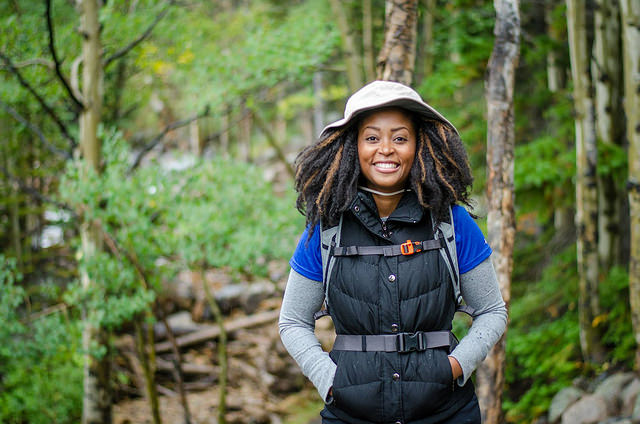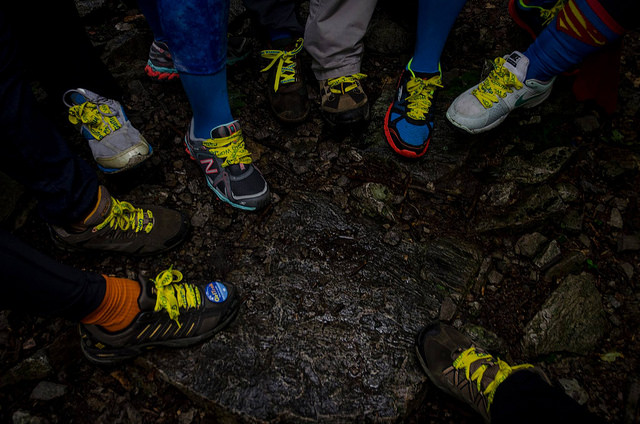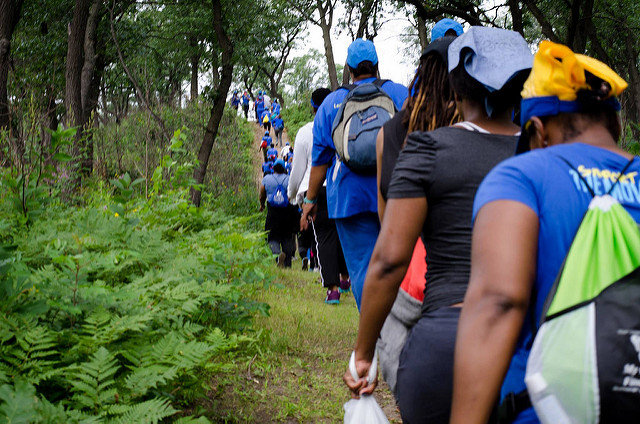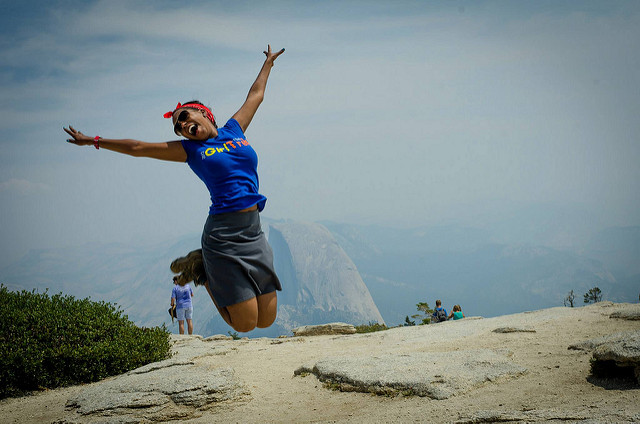
One of the best parts of living in Phoenix, AZ is the variety of magnificent mountainous trails, like “The Superstitions,” Papago Park, Deem Hills West or small climbs like Tempe’s Hayden Butte – all which are lined with diverse cacti, critters, and creative juice. Of course, I can't leave out the amazing views. There's tons of reasons to get moving, but like many outdoor adventures, making sure you properly prepare yourself before hitting the trails is key to having a good time and staying safe.
Organizations like GirlTrek, the largest public health movement and nonprofit for Black women and girls in the country, are helping to get more Black women in green spaces and equipping them to be nature pros.
"GirlTrek believes that Black women have the solutions to make the world healthier and stronger. When women get outside, they notice their environments and opportunities to act. This leads to the greening of communities, greater interest in environmental issues and a desire to explore more of the great outdoors.," leaders of GirlTrek said in a recent interview with the American Hiking Society.
Every summer, GirlTrek brings Black women and girls on hikes in some of the country's most beautiful places like the Great Smoky Mountains and Yosemite National Park as part of the GirlTrek Summer Trek Series. The hikes are led by GirlTrek's trained and certified trip leaders.
"These hikes are ways to bring even more Black women and girls out into nature and experience the wonder of the great outdoors and the sisterhood of the GirlTrek health movement," GirlTrek explained.
With summer temps climbing day by day, here’s what you should know before trekking it out.
Wear the right shoes. Leave the sandals and flip flops at home. For short hikes or more level terrain, a sturdy pair of sneakers are fine. For longer hikes or trekking through the mountains or over rocks, investing in a pair of hiking boots will offer more support. Whatever the footwear, always check to make sure you're laced up and tied tight.

Dress in layers. The weather can be unpredictable, and your body temperature will likely change throughout the hike. Dressing in layers helps you to adjust accordingly. Two important rules that the American Hiking Society recommends are: avoid cotton because it keeps moisture close to your skin and always carry a hat, which will protect you from the blazing sun (or other elements). There are numerous fabrics that wick moisture, dry quickly or conserve heat. Opt for these.

Wear brightly colored clothing. Bright colors help you to be identifiable to your group or in the event that you become lost and someone is sent to rescue you.
Hike with others. While no one heads out with the intent to get lost, it happens. Use the good old fashioned buddy system. Or, if you’re in need of some solo soul searching and the peace of a solo hike, ping your location to close friends and family. When hiking with children, it’s not a bad idea to post pics periodically, including a location and landmarks.
Stay hydrated. Don't wait until the morning of your hike to start guzzling water (your bladder may not enjoy that very much). Instead, get hydrated leading up to the hike and carry water with you on the trail. According to the American Hiking Society,"Without enough water, your body’s muscles and organs simply can’t perform as well. Consuming too little water will not only make you thirsty, but susceptible to hypothermia and altitude sickness."
Carry an emergency kit. Your kit should include a rain coat, lots of water, first aid essentials, a whistle, small flashlight, and snack food (preferably high in protein).
Communicate. Spare your loved ones the scare and check in with them before your hike, during (if possible) and definitely when you return.
Carry a map. Technology makes it easier these days to navigate, but learning to read a map is an invaluable skill. Relying on cell phones and GPS could prove to be a disaster should you lose signal or your battery dies.
Stay on the trail. While this may sound like common sense, you may be tempted to take shortcuts, which in unknown territory greatly increases your risk of getting lost or hurt. Though most popular trails are marked, I have come across some which can be tricky. Keep track of paint marks on trees and landmarks as a backup.
Wear sunscreen and sunglasses. Your layers will help to protect you from the elements, but a quality sunscreen should still be worn. You may encounter areas during your hike where you are completely exposed to the scorching rays of the sun and you'll want to protect your eyes and skin.

Use a daypack. In the words of Erykah Badu "pack light"! Instead of carrying a large purse or tote - which will be cumbersome - carry a small daypack or fanny pack. This will be perfect to hold your hiking essentials, like your rain coat, emergency kit, etc.
Prep children. Hiking is a great family activity. When hiking with children, attach a whistle to their clothing. Never dress them in camouflage. Also, talk to them about what to do in the event of getting lost or separated (they should stay put).
Leave no trace. The only thing you should leave or take from the trail are your memories. Dispose of garbage in designated areas or hold onto it until you get back to the trailhead; keep voices low; practice trail etiquette by walking on one side of the trail and allowing people who may be walking faster to pass by; do not disturb plants or wildlife. Leave the trail as you found it or better.
Don't panic. In the event you do get lost (God forbid) stay put. You’ll need to save your strength to ensure a timely, safe rescue. Build shelter if necessary. Select an open space where visibility is clear should a search team be sent out. Use your rain coat or poncho to stay warm/dry. Make yourself heard (whistle).
Get out and see the world, and now, you can do it safely.









